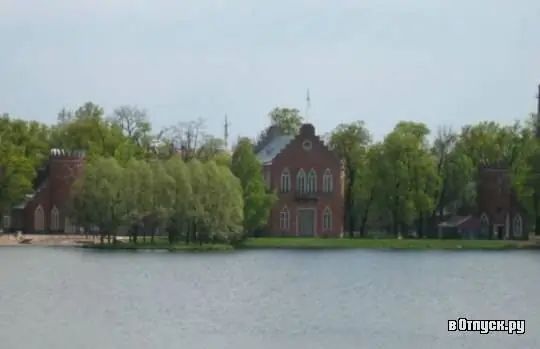
Description of the attraction
The Admiralty is a symmetrical ensemble consisting of three garden and park pavilions in the Dutch style, located on the bank of the Big Pond in the landscape area of the Catherine Park in the city of Pushkin. It was erected in the summer of 1773 according to the plan of the court architect Vasily Ivanovich Neelov for Empress Catherine II, probably in memory of the annexation of the Crimean Khanate to Russia.
The Admiralty replaced the wooden boat shed, but it was used for the same purpose - to maintain the "Tsarskoye Selo flotilla", or, more simply, the boats on which the Empress and the courtiers rode around the pond. Pleasure walks were accompanied by colorful illumination and the sounds of music, coming from the second floor of the Admiralty, where the orchestra was located.
The first of the Russian rulers to set up a mini-fleet at their palace in the Moscow Kremlin was Peter I. The architect's emphasis on continuing the traditions of Peter's "amusing fleet", was not indifferent to Peter the Great himself. In imitation of the Dutch brick buildings, the walls of the Admiralty were left unplastered.
In the 19th century, a whole collection of rowing boats was assembled on the lower floor of the central building. Of great historical interest were the treshcoats of Catherine the Great, the caik presented to Nicholas I by the Turkish Sultan, as well as ships from China (sampan), Venice (gondola) and other distant countries (kayaks, pies, etc.).
The guests climbed the stairs hidden inside the side towers to the Dutch Hall, in which the famous Gottorp Globe (1654) was installed in 1901, brought to Russia by Peter I. The walls of the hall were decorated with 166 landscape engravings drawn from England, where in 1770 -1771 the architect V. I. Neelov. The white tiling of this and other interior rooms was carried out in the years 1774-1775.
During the Great Patriotic War, the Admiralty suffered greatly: the collection of tsarist boats was lost, and the Gottorp Globe was sent to Germany (currently exhibited at the Kunstkamera in St. Petersburg). In the post-war years, the Admiralty was empty for quite a long time, now it organizes temporary exhibitions. A restaurant is located in one of the side buildings.
Side buildings in the form of ancient towers characterize the addiction of the Catherine Age to the forms of European Gothic (spiers, jagged parapets, acute-angled relief elements). These "poultry houses" were equipped to keep birds, sometimes overseas (peacocks, pheasants), but mostly ordinary swans and ducks, which swam in a pond in the warm season, and in the cold - wintered in a specially arranged pool. With these “cries of swans, near the waters shining in silence,” according to A. S. Pushkin, the Muse appeared to him for the first time.
The main building of the Admiralty is connected to the "poultry houses" by a fence made by the St. Petersburg Mint. Once upon a time, the pavilions were divided by small bodies of water.
Not far from one of the side buildings, you can see the Sailor's House, built in the 1780s to accommodate rowers and sailors. The covered pier was built in 1774 for pleasure boats by engineer I. K. Gerard. After the revolutionary events it was dismantled.






